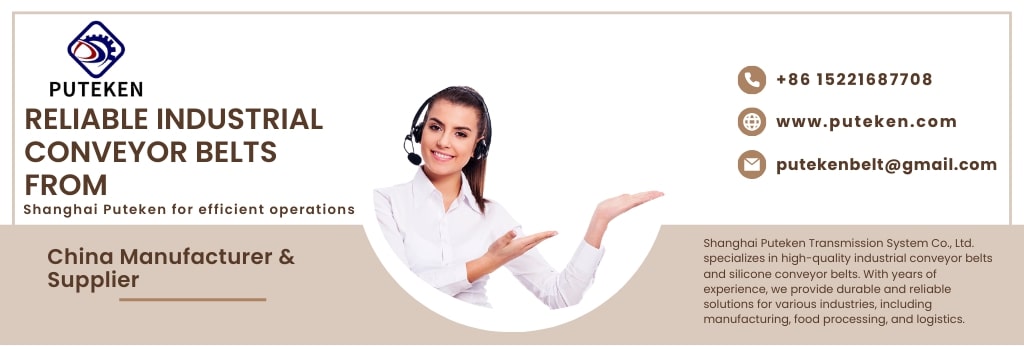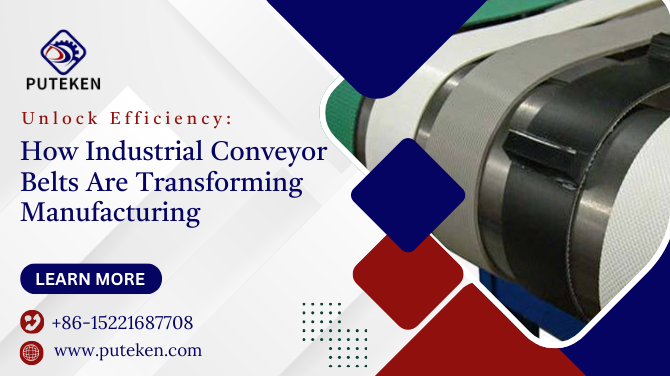In today’s fast-paced manufacturing world, efficiency is everything. Imagine trying to assemble cars, package goods, or process food without a seamless way to move products along the line. Sounds chaotic, right? This is where industrial conveyor belts come into play. They’ve revolutionized the way products are transported within manufacturing plants, making the process faster, safer, and more reliable.
Industrial conveyor belts are the unsung heroes of the manufacturing world, quietly boosting productivity and reducing labor costs.
What Are Industrial Conveyor Belts?
The Basic Concept and Structure
At their core, industrial conveyor belts are continuous loops of material designed to transport items from one place to another. They consist of a belt that rotates around two or more pulleys, powered by a motor. This simple yet effective system ensures smooth and consistent movement of goods, making manufacturing lines more efficient.
Types of Industrial Conveyor Belts
There isn’t a one-size-fits-all solution when it comes to conveyor belts. Different industries and tasks require different types of belts. Here are some common types:
Flat Belt Conveyors
These are the most common type, ideal for transporting lightweight and medium-weight items. They have a simple design and can handle a wide range of products.
Modular Belt Conveyors
Made of interlocking plastic segments, these belts are perfect for applications requiring flexibility and easy maintenance.
Roller Conveyors
These use rollers to move objects rather than a continuous belt. They’re great for heavy or bulky loads and often used in warehouses and distribution centers.
Cleated Belt Conveyors
These belts have vertical cleats to keep items from slipping. They’re ideal for transporting products up inclines or preventing them from rolling back.
The Role of Industrial Conveyor Belts in Modern Manufacturing
Enhancing Efficiency and Speed
In manufacturing, time is money. Conveyor belts streamline the production process by continuously moving items without interruption. This increases throughput and reduces downtime.
Reducing Manual Labor
Gone are the days when workers had to carry heavy loads or push carts around the factory. Conveyor belts automate these tasks, reducing the physical strain on employees.
Improving Safety in the Workplace
With fewer manual handling tasks, there’s a lower risk of workplace injuries. Conveyor belts minimize the chances of accidents and ensure a safer working environment.
Key Benefits of Industrial Conveyor Belts
Increased Productivity
By automating the movement of goods, conveyor belts help manufacturers produce more in less time. This directly translates to higher output and profits.
Consistency and Accuracy
Humans can get tired, but machines don’t. Conveyor belts ensure consistent handling and positioning of products, reducing errors and improving quality control.
Cost-Effective Solutions
While the initial investment might seem high, conveyor belts quickly pay for themselves by increasing efficiency and reducing labor costs.
Applications of Industrial Conveyor Belts Across Industries
Food and Beverage Industry
Conveyor belts are essential in food processing plants for transporting ingredients, packaging products, and ensuring hygiene standards are met.
Automotive Industry
In car manufacturing plants, conveyor belts move parts through assembly lines, speeding up production and ensuring accuracy.

Packaging Industry
Conveyor belts streamline the packaging process by moving products through labeling, sealing, and boxing stations seamlessly.
Mining and Construction
These industries rely on heavy-duty conveyor belts to transport raw materials like coal, rocks, and gravel over long distances.
How Shanghai Puteken Transmission System Co., Ltd. Stands Out
Innovative Conveyor Belt Solutions
Shanghai Puteken Transmission System Co., Ltd. specializes in cutting-edge conveyor belt technology. They create their products to be as durable and efficient as possible.
Commitment to Quality and Efficiency
Puteken’s commitment to quality ensures that their conveyor belts are reliable and long-lasting. Their solutions help manufacturers unlock new levels of efficiency.
Choosing the Right Conveyor Belt for Your Needs
Factors to Consider
When selecting a Industrial Conveyor Belts, it’s crucial to consider various factors to ensure you get the right fit for your operations.
Load Capacity
Consider the weight and size of the items the belt will carry.
Belt Material
Different materials are suited for different environments. For instance, stainless steel belts are ideal for food processing.
Operating Environment
Temperature, humidity, and exposure to chemicals can impact the belt’s performance.
Maintenance and Longevity of Industrial Conveyor Belts
Regular Inspections and Maintenance Tips
Routine inspections can prevent breakdowns. Check for wear and tear, ensure proper alignment, and lubricate moving parts regularly.
Extending the Lifespan of Your Belts
Proper maintenance, avoiding overloading, and using the belt for its intended purpose will extend its lifespan.
Future Trends in Conveyor Belt Technology
Automation and Smart Belts
The future is all about automation. Smart conveyor belts with sensors and IoT capabilities are becoming more common, improving efficiency further.
Eco-Friendly Materials
Sustainability is key. Manufacturers are developing eco-friendly belts made from recyclable materials to reduce environmental impact.
Industrial conveyor belts are transforming the manufacturing world by boosting efficiency, reducing labor, and improving safety. Leading manufacturers like Shanghai Puteken Transmission System Co., Ltd., offer cutting-edge and high-quality conveyor solutions. Investing in the right conveyor belt system can unlock new levels of productivity and streamline your operations.
FAQs
- What are the main types of industrial conveyor belts?
The main types include flat belt conveyors, modular belt conveyors, roller conveyors, and cleated belt conveyors.
- How do conveyor belts improve efficiency in manufacturing?
They automate the movement of products, reducing manual labor and increasing production speed.
- What is the best conveyor belt for my company?
Consider factors like load capacity, belt material, and operating environment.
- How can I maintain my industrial conveyor belts?
Regular inspections, proper lubrication, and avoiding overloading can help maintain the belts.
- What industries use industrial conveyor belts the most?
Industries like food and beverage, automotive, packaging, mining, and construction heavily rely on conveyor belts.




